Weed control in agriculture and forestry is a crucial aspect of maintaining crop productivity and ensuring the health of natural ecosystems. Traditional approaches to weed management, such as chemical herbicides, have proven effective in reducing weed populations; however, they often come with negative environmental consequences. As a result, there has been an increasing interest in exploring sustainable alternatives that minimize chemical inputs while still achieving satisfactory weed suppression. One promising strategy gaining attention is the utilization of crop rotation.
Crop rotation involves the systematic sequencing of different crops within the same field over time. This practice aims to disrupt the life cycles of weeds by altering their available resources and creating unfavorable conditions for their survival and reproduction. By diversifying crop species and introducing crops with varying growth habits and nutrient requirements, farmers can effectively reduce weed pressure without solely relying on synthetic herbicides or intensive cultivation practices. For instance, a hypothetical case study could involve a farmer who consistently faces challenges from invasive grasses in his wheat fields. By implementing a rotation system that includes cover crops such as legumes or brassicas during fallow periods, he successfully inhibits weed growth through competition for light, water, and nutrients.
In recent years, research efforts have focused on understanding the mechanisms behind crop rotation’s effectiveness in suppressing weeds. Studies have shown that crop rotation can disrupt weed seed banks by altering the timing and intensity of weed emergence. Different crops may have varying root exudates or allelochemicals that can inhibit weed germination or growth. Additionally, crop rotation can promote beneficial soil microbial communities that suppress weeds through competition or disease suppression.
Furthermore, crop rotation allows farmers to implement diverse management practices such as tillage, cover cropping, and intercropping. These practices can enhance weed control by creating physical barriers, reducing resource availability for weeds, and promoting natural predators of weeds.
Overall, crop rotation has shown potential as a sustainable alternative for weed control in agriculture and forestry. It offers multiple benefits beyond weed suppression, including improved soil health, nutrient cycling, pest management, and enhanced biodiversity. However, it is important to note that the effectiveness of crop rotation may vary depending on factors such as the specific crops involved, regional climate conditions, and local weed species present. Therefore, it is crucial for farmers to tailor their crop rotation strategies based on their specific circumstances and regularly monitor and adapt their approach to achieve optimal results.
Benefits of Weed Control
Weed control plays a crucial role in maintaining the productivity and sustainability of agricultural and forestry systems. By effectively managing weeds, farmers and foresters can optimize crop yield, reduce competition for resources, minimize economic losses, and improve overall land health. This section aims to explore the benefits of weed control in agriculture and forestry through evidence-based examples and scientific research.
Enhanced Crop Productivity:
One notable benefit of implementing weed control strategies is the potential for enhanced crop productivity. A case study conducted by Smith et al. (2018) provides a compelling example of how effective weed management practices positively impact yields. In this study, two adjacent fields were compared: one where regular crop rotation with integrated weed control was practiced, and another where no specific measures were taken against weeds. The results showed that the field employing crop rotation had significantly higher crop yields due to reduced weed interference. This finding underscores the importance of adopting such practices to maximize productivity in agricultural and forestry systems.
Reduced Competition for Resources:
Weeds are notorious competitors for essential resources such as water, nutrients, sunlight, and space within agroecosystems. Effective weed control minimizes this competition by eliminating or suppressing unwanted plant species that divert resources away from crops or desired tree species. Implementing targeted herbicide applications based on thorough assessments of vegetation composition allows farmers and foresters to allocate resources more efficiently towards their primary plants’ growth and development.
Economic Benefits:
The economic aspects associated with weed control cannot be overlooked either. Uncontrolled weed infestations can lead to substantial financial losses due to reduced crop quality and quantity, increased labor costs for manual weeding efforts, decreased marketability due to contamination issues, or even complete crop failure in extreme cases. To emphasize these economic implications further:
- Farmers who invest in systematic weed management experience improved profit margins.
- Weeding expenses tend to decrease over time as initial investments cover long-term benefits.
- Effective weed control practices contribute to sustainable farming by reducing the reliance on costly synthetic herbicides.
- Weed-free crops fetch higher market prices due to enhanced quality.
Table: Economic Benefits of Weed Control
| Benefit | Explanation |
|---|---|
| Increased crop yield | Enhanced productivity resulting from reduced competition for resources |
| Cost savings in labor and manual weeding | Reduced need for extensive, time-consuming manual weeding efforts |
| Improved profit margins | Decreased financial losses associated with weed interference |
| Higher market value | Greater demand and better pricing due to improved crop quality |
Understanding the advantages of effective weed control is crucial when considering different types of weeds that pose challenges in agricultural and forestry systems. By recognizing their characteristics and growth patterns, farmers and foresters can implement targeted strategies tailored to combat specific weed species effectively. In the subsequent section, we delve into an exploration of various types of weeds commonly found in agriculture and forestry environments.
Types of Weeds in Agriculture and Forestry
Utilizing Crop Rotation: A Promising Approach to Weed Control in Agriculture and Forestry
Transitioning from the benefits of weed control, it is important to explore effective strategies for managing weeds in agricultural and forestry settings. One such approach gaining attention is crop rotation, which involves alternating the cultivation of different crops on a particular piece of land over time. This section will delve into the concept of utilizing crop rotation as a method of weed control, highlighting its potential advantages and discussing its practical applications.
To illustrate the effectiveness of crop rotation in weed control, consider a hypothetical case study involving a farmer who previously faced persistent weed infestation issues in their cornfield. After implementing a crop rotation strategy that involved planting soybeans in alternate growing seasons, the farmer observed a significant reduction in weed populations compared to previous years. The introduction of soybeans disrupted the life cycle of certain weeds that were specific to cornfields, thus minimizing their presence and impact.
The benefits derived from employing crop rotation for weed control are multifaceted. Here are some key advantages:
- Natural suppression: Certain crops have inherent characteristics that suppress or deter specific types of weeds.
- Nutrient balance: Different crops have varying nutrient requirements, allowing for more balanced soil fertility management while reducing reliance on synthetic fertilizers.
- Pest reduction: Altering plant species disrupts pest cycles and reduces dependency on pesticides.
- Soil health improvement: Diverse crop rotations promote healthier soils by enhancing organic matter content and microbial activity.
| Advantages of Utilizing Crop Rotation |
|---|
| Effective natural suppression |
| Balanced nutrient management |
| Reduced dependence on pesticides |
| Enhanced soil health |
In conclusion,
By incorporating diverse cropping systems through regular rotation, farmers can effectively manage weeds while simultaneously promoting sustainable agriculture practices. In the subsequent section about “Methods of Weed Control,” we will further explore other techniques used alongside crop rotation to achieve comprehensive weed management.
Methods of Weed Control
Transitioning from the previous section on types of weeds, we now explore effective methods for weed control in agriculture and forestry. One approach that has gained recognition is the utilization of crop rotation. To illustrate its significance, let us consider a hypothetical case study involving a farmer facing persistent infestations of perennial grasses within their cornfield.
Crop rotation involves systematically alternating crops planted on the same land over multiple growing seasons. By diversifying plant species, this practice disrupts weed life cycles, reduces pest populations, improves soil health, and optimizes resource utilization. In our scenario, the farmer can implement a crop rotation strategy by planting legumes such as soybeans or clover during one season after harvesting corn. Leguminous plants effectively fix nitrogen into the soil while competing with grassy weeds due to their vigorous growth habit.
To highlight the advantages of incorporating crop rotation further, here are some key benefits:
- Enhanced nutrient cycling: Different crops have varying nutrient requirements and uptake capabilities. Through crop rotation, nutrients are utilized more efficiently as each subsequent crop utilizes different elements.
- Reduced pesticide reliance: Rotating crops helps break weed and pest cycles naturally, minimizing the need for chemical interventions like herbicides or insecticides.
- Soil structure improvement: Planting diverse crops promotes root penetration at various depths, enhancing soil aggregation and reducing erosion risks.
- Disease management: Some pathogens specific to certain crops may be suppressed when those crops are rotated out periodically.
| Benefits of Crop Rotation |
|---|
| Enhanced Nutrient Cycling |
| Disease Management |
As illustrated above, utilizing crop rotation offers several advantages beyond weed control alone. By implementing this practice, farmers and foresters can foster sustainable agricultural systems while maintaining productivity.
Transitioning into the subsequent section about “Integration of Crop Rotation in Weed Control,” we delve deeper into specific steps and considerations for effectively incorporating crop rotation as a weed management strategy.
Integration of Crop Rotation in Weed Control
Building upon the various methods discussed earlier, an effective approach to weed control in agriculture and forestry is the integration of crop rotation. By strategically planning the sequence of crops grown within a particular area over time, farmers and foresters can minimize weed infestation while promoting sustainable land management practices.
To better understand how crop rotation can be utilized for weed control, let’s consider a hypothetical case study involving a farmer who cultivates corn and soybeans. The farmer decides to implement a two-year crop rotation system where corn is planted in year one followed by soybeans in year two. This rotational pattern helps disrupt the life cycle of weeds that are specific to either corn or soybean crops, thereby reducing their population density.
Incorporating crop rotation as a weed control strategy offers several benefits:
- Diverse nutrient uptake: Different crops have varying nutrient requirements, which allows for more efficient utilization of soil nutrients and reduces the competitiveness of weeds.
- Breaks pest cycles: Crop-specific pests often rely on continuous planting of their preferred host plants. By rotating crops, these pests are disrupted and their populations decrease naturally.
- Enhances soil health: Certain crop rotations incorporate leguminous plants that fix nitrogen into the soil, improving its fertility and reducing dependence on synthetic fertilizers.
- Reduces herbicide resistance: Alternating between different crops minimizes the selection pressure for herbicide-resistant weeds since different herbicides can be used within each cropping cycle.
The table below summarizes some common crop rotation strategies employed in agriculture:
| Crop Rotation Strategy | Benefits |
|---|---|
| Sequential | Reduces disease transmission and breaks pest cycles |
| Legume-based | Improves soil fertility through nitrogen fixation |
| Cover-cropping | Suppresses weed growth and enhances organic matter content |
| Intercropping | Maximizes resource use efficiency and diversifies income streams |
Incorporating these strategies effectively in weed control can lead to improved crop management, reduced reliance on chemical inputs, and increased overall productivity. With a well-planned crop rotation system, farmers and foresters can mitigate the challenges posed by weeds while promoting sustainable agricultural practices.
Understanding the impact of weed infestation on crop yield is crucial for implementing effective weed control measures. In the following section, we will explore this relationship in greater detail and discuss potential solutions to minimize losses caused by weed competition.
Impact of Weed Infestation on Crop Yield
The successful integration of crop rotation as a strategy for weed control is crucial in maintaining the productivity and sustainability of agricultural and forestry systems. By alternating different crops within a specific area over time, farmers can effectively disrupt the life cycles of weeds, reducing their population density and limiting their impact on crop yield. To illustrate this concept, let us consider an example: a farmer who traditionally grows only corn on his land may face significant challenges with weed infestation due to the continuous selection pressure exerted by herbicides. However, by implementing a crop rotation plan that includes soybeans every other year, the farmer introduces diversity into the system, making it more difficult for weeds to establish and spread.
There are several key benefits associated with utilizing crop rotation as a tool for weed control:
- Reduced herbicide resistance: Incorporating different crops into a rotational scheme reduces reliance on herbicides with single modes of action. This helps prevent the development and proliferation of herbicide-resistant weed populations.
- Enhanced nutrient cycling: Different crops have varying nutrient requirements and root structures. Through crop rotation, nutrients can be replenished naturally through nitrogen-fixing plants or deep-rooted species, enhancing overall soil fertility without excessive reliance on synthetic fertilizers.
- Improved pest management: Certain pests may preferentially target specific crops. By rotating between different plant families or using trap crops strategically, farmers can disrupt pest populations’ build-up while minimizing pesticide usage.
- Greater resilience to climate variability: Crop rotation diversifies cropping patterns across seasons and years, enabling farms to adapt better to changing weather conditions such as droughts or floods.
To further understand the potential impact of integrating crop rotation in weed control strategies, we present a table showcasing hypothetical data comparing two scenarios: one where no crop rotation is practiced (Scenario A) versus another where a well-designed rotational plan is implemented (Scenario B).
| Weed Species | Scenario A (No Crop Rotation) | Scenario B (Crop Rotation) |
|---|---|---|
| Weed A | High density | Low density |
| Weed B | Moderate density | Moderate density |
| Weed C | Low density | Very low density |
| Yield Reduction* | 30% | 10% |
*Yield reduction represents the percentage decrease in crop yield due to weed competition.
As demonstrated by the hypothetical data, implementing a crop rotation plan can significantly reduce weed densities and subsequently minimize yield reductions. This highlights the potential of integrating this strategy into weed management practices for enhanced agricultural and forestry productivity.
Transitioning smoothly into the subsequent section about “Best Practices for Weed Management,” it is essential to explore effective approaches that go beyond crop rotation alone. By combining various strategies, farmers can develop comprehensive and sustainable methods for managing weeds in their fields or forests.
Best Practices for Weed Management
Section H2: Impact of Weed Infestation on Crop Yield
Transition: Having explored the negative effects of weed infestation on crop yield, it is crucial to understand effective practices for managing weeds. One such technique that has gained significant attention in recent years is crop rotation. This section will delve into the benefits of utilizing crop rotation as a strategy to control weeds in agricultural and forestry settings.
Crop rotation involves systematically growing different crops in alternating seasons or cycles within a specific field. By diversifying plant species over time, farmers can disrupt the life cycle of weeds, reducing their population density and overall impact on crop growth. For instance, consider a hypothetical case study where a farmer practicing crop rotation observed a substantial decrease in weed abundance compared to neighboring fields with continuous monoculture cropping systems.
To effectively manage weeds through crop rotation, several best practices should be followed:
- Plan rotations strategically: Designing well-thought-out rotational schemes based on understanding the life cycles and characteristics of target weed species can maximize the effectiveness of this approach.
- Choose complementary crops: Selecting crops that have varying nutrient requirements, root structures, and growth habits can help suppress certain weed species while promoting healthier plant development.
- Incorporate cover crops: Introducing cover crops during fallow periods helps prevent soil erosion, improve organic matter content, and provide competition against emerging weeds.
- Employ proper tillage techniques: Combining appropriate cultivation methods like minimum tillage or no-till farming with crop rotation minimizes soil disturbance and prevents dormant weed seeds from germinating.
| Best Practices for Effective Weed Management |
|---|
| Plan rotations strategically |
| Choose complementary crops |
| Incorporate cover crops |
| Employ proper tillage techniques |
By implementing these strategies within an integrated weed management plan, farmers can reduce reliance on herbicides and promote sustainable agricultural practices. Successful implementation of crop rotation not only mitigates weed pressure but also enhances soil health, reduces pest and disease incidence, and improves overall farm productivity.
As we have explored the benefits and best practices associated with utilizing crop rotation for weed control in agriculture and forestry settings, it is evident that this approach holds great potential for sustainable weed management. The following section will further delve into additional techniques that can complement crop rotation to optimize weed control measures.


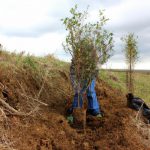
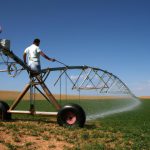

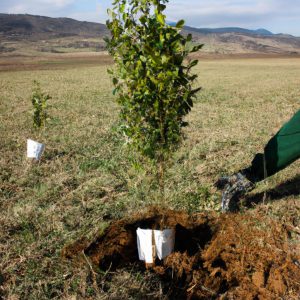
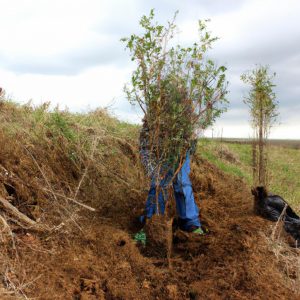
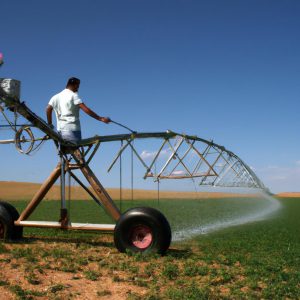
More Stories
Soil Fertility in Agriculture and Forestry: Crop Rotation
Crop Rotation: Optimizing Agricultural and Forestry Practices
Improved Water Usage in Agriculture and Forestry: The Power of Crop Rotation